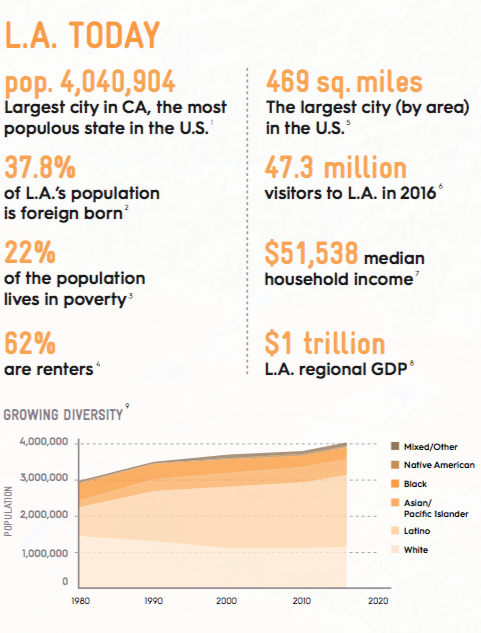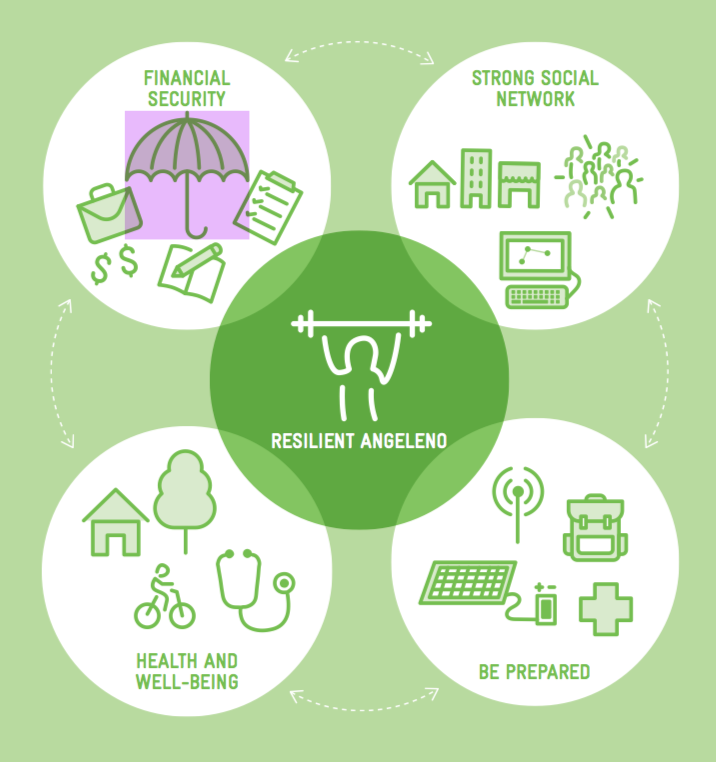Social emotional learning is top of mind for educators and parents these days – with experts such as Angela Duckworth opining about the importance of raising kids who have resiliency and “grit” (here is Duckworth’s potent TED talk).
But did you know that cities think about being resilient, too? Turns out, there is a commission of 100 Resilient Cities, whose mission it is to help cities around the world become more resilient to the physical, social, and economic challenges that are a growing part of the 21st century. Challenges turn out to include both chronic stresses (high unemployment, inefficient transportation infrastructure, endemic violence, chronic food and water shortages) and acute shocks (earthquakes, floods, disease outbreaks, terrorist attacks).

Here’s a snapshot of our city -if you think it’s hard to raise resilient kids, imagine how much work it is to consider how to make Los Angeles — our infrastructure, people and land — resilient. Turns out, Los Angeles has just produced a Resiliency Plan, and last week I met the woman who spearheaded the City’s efforts to plan for success. (Her tips for how you can help prepare yourself and your neighborhood are below).
Here is an executive summary, if you want to explore quickly, and here is the whole report – it contains a lot of information but is laid out well, albeit ambitious and very thorough. I recommend spending a few moments looking through. You can focus on page 30, which is about what individuals and neighborhoods can do.

WHAT CAN WE DO?
LA’s Chief Resiliency Officer, Marissa Aho, shared how individuals can do their part to tackle this overwhelming (and potentially scary) topic. The report she wrote for the Mayor asks is that citizens do their part in being prepared. “A resilient Angeleno is capable of withstanding a crisis.”
Having recently toured the devastated areas in Montecito with friends whose home had been totaled, my attention to all of this has been sharpened. My version of preparation has historically been to stick my head in the sand, so now, I am getting prepared.
Here are some do-able, important steps.
- Prepare to survive on your own for TWO WEEKS. That means stocking up on water, having canned food for humans and pets, having cash on hand, etc. Here is a basic list of what you need.
- Sign up for NOTIFY LA and consider doing a CERT training with LA Fire Department.
- Get insurance in order – itemize possessions, read the fine print about disasters, and be sure you are paying for what you might need in a catastrophic loss.
- Know your neighbors. Ms. Aho suggests throwing a block party this spring, for the express purpose of building relationships that can provide relief and community in a crisis. She put a fine point on the problem – “in a severe emergency the city will not be able to help everyone immediately, so it will be imperative to rely on neighbors for basic needs”
- Know how to turn off the water, gas and electricity. Here is a link you can study.
Most of us are not sufficiently prepared to survive an earthquake of major magnitude. Here is what to do during a big shake – and here, from ReadyLA, is basic advice about creating a plan for your family.
|
Further Reading from the LA TIMES:
Preparing your Home – technical details
Preparing for a Quake- practical and less scary (you’ll need board games!)

